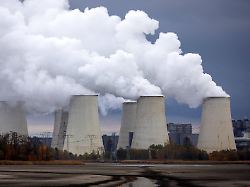Although the EU and USA are making savings
Coal consumption is rising to record levels worldwide
December 15, 2023, 8:54 a.m
Listen to article
This audio version was artificially generated. More info | Send feedback
Despite the climate crisis, coal is still one of the most popular energy sources – especially in Asia. Consumption there is increasing immensely and is overshadowing the sharp decline in demand in Europe and the USA. The International Energy Agency is therefore reporting record values.
According to the International Energy Agency (IEA), the climate-damaging consumption of coal has reached a new high worldwide this year. The IEA said total consumption rose by 1.4 percent to 8.5 billion tons. A sharp decline in demand in Europe and the USA was offset by growing consumption in Asia. “Demand in emerging and developing countries, however, remains very high,” said the IEA.
In China alone, 220 million tons more coal were consumed than in the previous year, which corresponds to an increase of 4.9 percent. According to the IEA, an increase of eight percent was recorded in India, while consumption in Indonesia increased by eleven percent.
According to the International Energy Agency, coal consumption in Europe fell by 23 percent and in the USA it fell by 21 percent. This is mainly due to weaker industrial activity and the move away from coal-fired power generation in favor of renewable energies.
Decline forecast for the first time
The IEA expects coal consumption to be lower next year. “We assume that there will be a trend towards falling global coal demand from 2024 onwards,” the Paris-based agency said. Around 2.3 percent reduction in climate-damaging energy sources is forecast by 2026. It is the first time ever that the IEA expects coal consumption to fall.
The World Climate Conference in Dubai had decided on the beginning of the end of fossil energy production. After two weeks of negotiations, the almost 200 participating countries agreed for the first time on a text that calls for a “transition” away from fossil fuels. However, the clear phase-out from coal, oil and gas demanded by more than 100 countries is not happening.
According to the IEA, coal is still the most important energy source for electricity generation, steel and cement production – and the largest man-made source of the greenhouse gas carbon dioxide. According to the IEA, consumption would actually have to fall significantly faster in order to meet the goals agreed in the Paris Climate Agreement.
